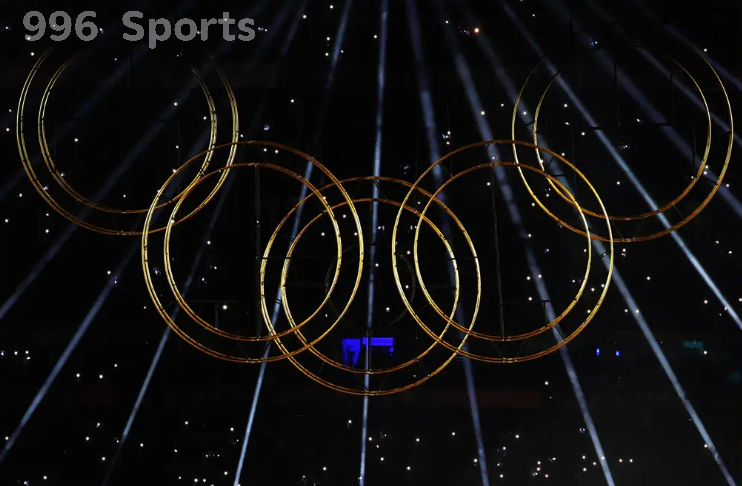Paris Olympics | More open, more urban - a summary of the highlights of the Paris Olympics preparations

The opening ceremony on the Seine, the Olympic stadium under the Eiffel Tower, the figures of sports in the streets and alleys... The Paris Olympics, with the slogan of "More Open Olympics", ended on the 11th. This sports event integrated into the city, showcased culture, and left an unforgettable Olympic mark.
In December 2021, the Paris Olympic Organizing Committee officially announced the creative plan for the opening ceremony of the 2024 Olympic Games, which is planned to be held in the 6-kilometer Seine River and along the river. Since then, the preparations for the Paris Olympics have received more and more attention, and people are looking forward to an Olympic Games full of romance and art.
This is the first time in the history of the modern Olympics that the opening ceremony has been moved from the stadium to an open urban space. The opening ceremony of the Paris Olympics uses the city as the background, the river as the "runway", and the dock as seats. 205 delegations and about 6,800 athletes boarded 85 ships, set off from the Austerlitz Bridge, sailed west along the Seine, passed Notre Dame de Paris, the Louvre, the Place de la Concorde and other iconic buildings, and finally came to the Trocadero Square on the opposite bank of the Eiffel Tower to participate in the celebration ceremony.
Although it rained on the night of the opening ceremony, it could not stop the enthusiasm of the athletes and the audience. People sang and danced in the gorgeous lights, celebrating together on the riverside, in the auditorium, and even on the balcony. Tony Estanguet, president of the Paris Olympic Committee, said: "I am very happy that athletes from all over the world have successfully completed the boat entry. This is a historic moment. From now on, Paris has become their stage."
The Seine River became part of the Olympic arena after the opening ceremony. Many venues for the Paris Olympics were set up in famous attractions - beach volleyball was near the Eiffel Tower, fencing and taekwondo competitions were held at the Grand Palais in Paris, the Place de la Concorde was the venue for emerging events such as three-on-three basketball, breakdancing, and skateboarding, and equestrian and modern pentathlon competitions were held near the Palace of Versailles...
There are only three newly built venues for this Olympics, namely the La Chapelle Porte Sports Hall for badminton and rhythmic gymnastics competitions, the Aquatic Center for synchronized swimming, water polo and diving competitions, and the Le Bourget Sports Climbing Center in the northeastern suburbs of Paris. The Olympic Village also makes full use of existing buildings and facilities, transforming the film and television base into a restaurant with 3,200 seats, the film studio into an athlete training room, and using the resources of the local medical school to set up a comprehensive clinic. After the Paris Olympics, the Olympic Village will become a community with 3,000 houses.
Marie Salois, director of sustainable development of the International Olympic Committee, said that improving the sustainability of the Olympics and ensuring that the Olympics brings lasting and measurable benefits to local people is one of the main tasks of the International Olympic Committee.
The Paris Olympic Games are exciting and also provide people with more opportunities to get close to athletes. From July 29 to August 11, the public celebrated the glorious moments with Olympic medal winners in the "Champions Park" under the Eiffel Tower, which can accommodate up to 13,000 people per day.
During the Olympics, people running and cycling can be seen everywhere on the streets of Paris, and skateboarding, BMX, breakdancing and other projects are very popular. On the 10th, on the evening after the men's marathon, the first mass marathon in the history of the Olympics allowed amateur runners to stand on the Olympic track and feel the charm of the Olympic movement.
"In Paris, I felt the enthusiasm of athletes, French people and global sports fans. They actively participated in the Olympics, felt the Olympics and integrated into this grand event. This is a story about 'love'." Thomas Bach, President of the International Olympic Committee, said: "More than half of the world's population has paid attention to the Paris Olympics. The French celebrated the arrival of the Olympics in a friendly and hospitable way from the bottom of their hearts. Such a scene warms people's hearts." From the Louvre to the community park, you will inadvertently find art exhibitions related to the "Olympics". The Paris Olympic Organizing Committee proposed the concept of "Cultural Olympics" very early, encouraging all artists and every Frenchman to participate in it. The French Ministry of Culture said that it would take the opportunity of hosting the Paris Olympics and Paralympics to eliminate the "boundary between the two worlds of culture and sports." The rich culture and unique artistic atmosphere impressed every participant of the Paris Olympics. Hernan Geramilo, a 59-year-old Colombian, is a volunteer at the main media center of the Paris Olympics. He has been working in the United States for a long time. This time he took a month off and served as an Olympic volunteer for the first time. He said: "I felt the fusion of cultures at the Paris Olympics. I communicated with friends from France, Germany, Italy and South Africa and shared each other's stories. I also collected more than 50 badges. This was an unforgettable journey.
"Our volunteer team covers all age groups, including young people and volunteers in their 50s and 60s. This is a gathering for everyone." Jeramillo said.
The Paris Olympics is the first Olympics to fully implement the Olympic reform roadmap "Olympic Agenda 2020" from beginning to end. Bach said that the Paris Olympics is younger, more inclusive, more urbanized and more sustainable, which fully fits the slogan of "More Open Olympics".
